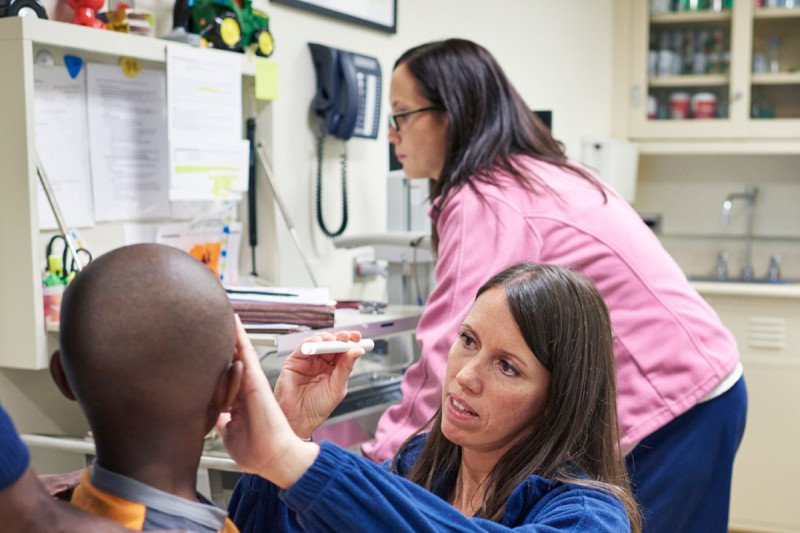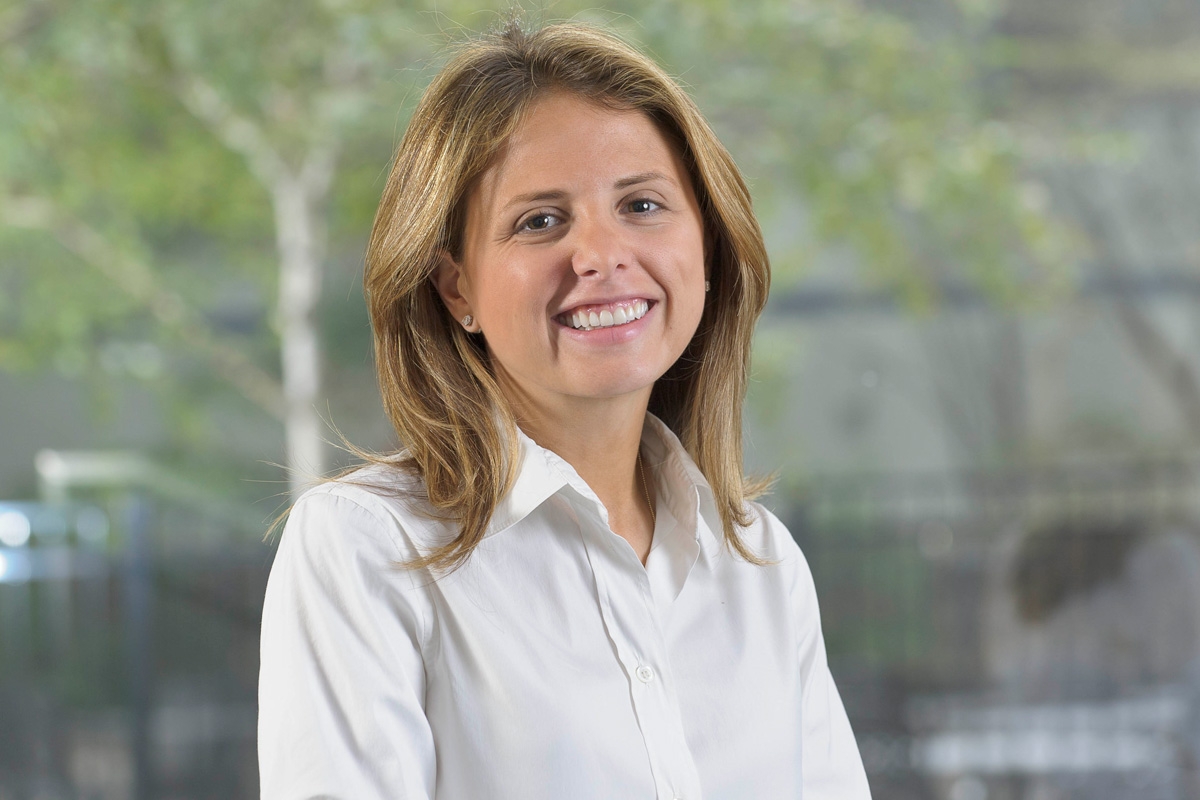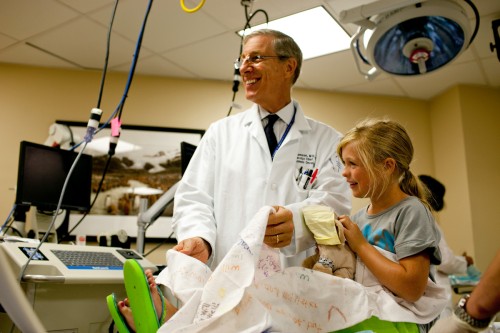
A young patient with retinoblastoma is examined by a team of MSK ophthalmic oncologists.
For adult survivors of retinoblastoma, a rare childhood cancer affecting the eyes, a big concern is late-arising health conditions. These can include second cancers and eye problems, as well as side effects related to retinoblastoma treatment, though up to now the particular problems to watch out for have not been clear.
A new study conducted by Memorial Sloan Kettering researchers and published in the journal Cancer looks at these long-term effects, and — for the first time — offers an estimation of their frequency and extent.
We spoke with lead author and MSK pediatrician Danielle Novetsky Friedman about the significance of the study, which looked at follow-up data from retinoblastoma patients going back to 1932.
Why is this study significant?
Very few large studies have looked at this population, which means there wasn’t a lot of information out there before on the issue of long-term health consequences. I frequently get emails from retinoblastoma survivors who say, “What should I be looking out for?” This is really the first report with such a large number of patients, and given the rarity of this tumor, that’s something significant.
What long-term consequences of retinoblastoma did you study?

Danielle Novetsky Friedman, MSK pediatrician
We started out by looking at all long-term medical conditions, including second cancers and eye problems. But there already are a lot of data on those two things, particularly in those survivors with the hereditary form of retinoblastoma. So we were interested in looking at the other problems these patients develop in adulthood. They are living very long, productive lives, but they’ve received treatment that can cause different health issues. We were interested in delineating what those other problems are.
What were the most common health problems that you found among retinoblastoma survivors?
After second cancers and eye problems, the most common severe, chronic conditions were hearing loss, thyroid nodules that required partial thyroidectomies, and diabetes requiring insulin.
You found that these health problems were more common among patients with retinoblastoma in both eyes. Why is that?
Even though retinoblastoma is one disease, it’s really quite different in those with disease confined to one eye and those with disease in both eyes. If you have retinoblastoma in both eyes, called bilateral disease, you’re presumed to have a germline genetic mutation — meaning it is present in all the cells in your body. Having that mutation predisposes you to other types of cancer. The majority of patients who have disease in only one eye don’t have that mutation — although some do.
Anyone with a history of bilateral disease is at risk for second, third, and fourth cancers. Patients with disease in both eyes also probably receive more treatment than those with disease in one eye. That puts them at increased risk for these treatment-related chronic conditions that emerge later in life.
So the late effects you’re seeing are primarily related to prior treatment?
Yes, for the most part. In the case of secondary cancers, these are probably related to the genetics of the disease as well. The visual issues are related to the disease and the treatment. The other long-term health issues are most likely driven by the treatment — radiation in many cases. In addition to killing the cancer cells, radiation therapy can potentially damage healthy tissue in the radiation field. It is possible that some of the health issues we noted were related to radiation exposure of healthy tissues. Retinoblastoma survivors with the genetic form of the disease also have increased sensitivity to radiation.
Are there lessons from this study for how patients with retinoblastoma should be treated today?
For the most part, the patients in this study were treated in a way that patients today would not be treated. We now use radiation much less frequently, and we have all kinds of new treatments, including something called intra-arterial chemotherapy, which we hope will result in few long-term problems. What this study does is provide us with a historic benchmark for looking at future potential problems related to more contemporary treatments.
It can also inform the care of long-term survivors of retinoblastoma who were treated with older therapies. For instance, in our clinic, we take care of patients who had retinoblastoma as young children and who have survived for many years. These data are helpful for people like us who care for these patients as they grow older.
In the case of survivors with bilateral disease or a known mutation, we are always on the lookout for other cancers, including osteosarcoma — a type of bone cancer — soft tissue sarcomas, and melanoma. This study shows we should also be paying attention to possible hearing problems and doing careful thyroid exams, for example.
Despite the long-term health consequences in some patients, how does the overall picture look for retinoblastoma survivors?
Overall, the results of this study were quite encouraging. All of these data are self-reported. Survivors filled out a very detailed survey about their medical health. We asked the question, “How would you rate your general health?” The vast majority of people rated their health as excellent, very good, or good. That is a really encouraging takeaway message for those of us who are doing this work.


